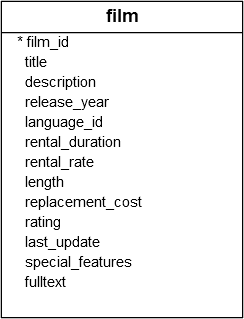PostgreSQL OR Operator
Summary: in this tutorial, you will learn about the PostgreSQL OR logical operator and how to use it to combine multiple boolean expressions.
Introduction to the PostgreSQL OR operator
In PostgreSQL, a boolean value can have one of three values: true, false, and null.
PostgreSQL uses true, 't', 'true', 'y', 'yes', '1' to represent true and false, 'f', 'false', 'n', 'no', and '0' to represent false.
A boolean expression is an expression that evaluates to a boolean value. For example, the expression 1<>1 is a boolean expression that evaluates to false:
SELECT 1 <> 1 AS result;Output:
result
--------
f
(1 row)The letter f in the output indicates false.
The OR operator is a logical operator that combines multiple boolean expressions. Here’s the basic syntax of the OR operator:
expression1 OR expression2In this syntax, expression1 and expression2 are boolean expressions that evaluate to true, false, or null.
The OR operator returns true only if any of the expressions is true. It returns false if both expressions are false. Otherwise, it returns null.
The following table shows the results of the OR operator when combining true, false, and null.
| OR | True | False | Null |
|---|---|---|---|
| True | True | True | True |
| False | True | False | Null |
| Null | True | Null | Null |
In practice, you usually use the OR operator in a WHERE clause to ensure that either of the specified expressions must be true for a row to be included in the result set.
PostgreSQL OR operator
Let’s explore some examples of using the OR operator.
1) Basic PostgreSQL OR operator examples
The following example uses the OR operator to combine true with true, which returns true:
SELECT true OR true AS result;Output:
result
--------
t
(1 row)The following statement uses the OR operator to combine true with false, which returns true:
SELECT true OR false AS result;Output:
result
--------
t
(1 row)The following example uses the OR operator to combine true with null, which returns true:
SELECT true OR null AS result;Output:
result
--------
t
(1 row)The following example uses the OR operator to combine false with false, which returns false:
SELECT false OR false AS result;Output:
result
--------
f
(1 row)The following example uses the OR operator to combine false with null, which returns null:
SELECT false OR null AS result;Output:
result
--------
null
(1 row)The following example uses the OR operator to combine false with false, which returns false:
SELECT false OR false AS result;Output:
result
--------
f
(1 row)The following example uses the OR operator to combine null with null, which returns null:
SELECT null OR null AS result;Output:
result
--------
null
(1 row)2) Using the OR operator in the WHERE clause
We’ll use the film table from the sample database for the demonstration:
 The following example uses the
The following example uses the OR operator in the WHERE clause to find the films that have a rental rate is 0.99 or 2.99:
SELECT
title,
rental_rate
FROM
film
WHERE
rental_rate = 0.99 OR
rental_rate = 2.99;Output:
title | rental_rate
-----------------------------+-------------
Academy Dinosaur | 0.99
Adaptation Holes | 2.99
Affair Prejudice | 2.99
African Egg | 2.99
...Summary
- Use the
ORoperator to combine multiple boolean expressions.